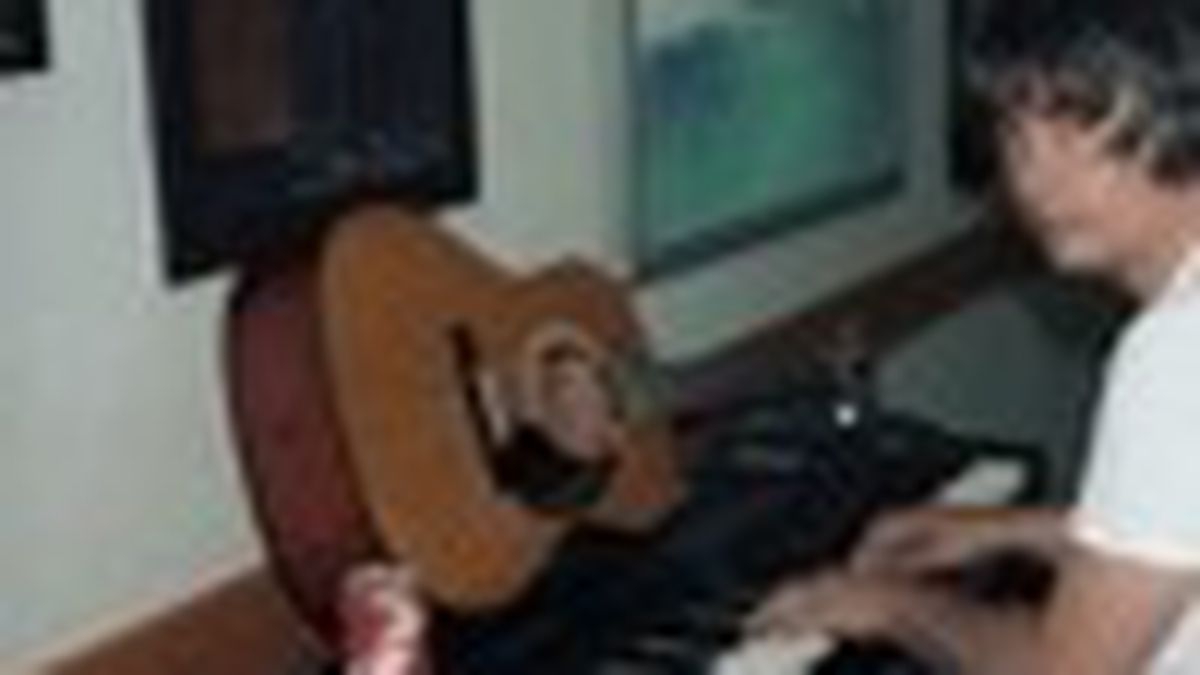Countless are the creative souls who struggle with mental illness, as are the novels and films dedicated to them. Again and again, we’ve encountered artists both inspired and undermined by their madness, whose torment and tumult produce works of beauty and depth. So can a documentary about a singer-songwriter and visual artist who perennially self-destructs show us something new? Or can it at least bring us closer to a phenomenon that we’re still trying to understand?
Maybe. In many ways, The Devil and Daniel Johnston is a beautiful work, a painstakingly crafted portrait of a talented self-saboteur — a man consistently done in by a vicious mental illness. But it’s not as compelling as one would hope. Despite the ample archival footage and audio tapes created by Johnston, who has obsessively documented his own life, Devil never quite gives us a sense of what it’s like to be Johnston, of how it feels to live inside his mind. Instead, the more indelible impression is of his friends and his family, and particularly of his parents. Bill and Mabel Johnston are layered, sympathetic figures. Far more than Daniel, they grow and change throughout the film, and this growth becomes the emotional center of the movie.
Johnston’s trajectory has followed a typical pattern for someone suffering from manic depression. According to Mabel, he was different from the start — moody and exhausting, always playing the clown. By junior high, he started making films; in high school, he set up an “art factory” in the basement, obsessively drawing and recording music while his parents went to church and lived middle-class lives. At college, Johnston started to flounder, unable (or unwilling) to attend classes and do the work. Instead, he found a muse and set about memorializing her rejection of him (her face has since launched a thousand of Johnston’s songs).
After leaving college, Johnston lived with various siblings, joined a traveling carnival, and landed in Austin, where he became part of the burgeoning 1980s alternative music scene. By recording his songs on low-fi cassettes and handing them out for free, he built a small following; then, once he weaseled his way onto MTV, his star began to rise. But just as the record companies and music magazines started calling, Johnston broke down. High on acid and convinced that his handlers were satanists, he attacked his manager with a lead pipe and put him in the hospital.
The pattern repeats. The offers get better, and the breakdowns get bigger. Various figures around Johnston promote him, protect him, and parent him, believing so fervently in his talent that they permit all manner of difficult behavior until, inevitably, he becomes unmanageable. Then they send him home.
Director Jeff Feuerzeig wants to get inside the mind of a mad artist. In the film’s press notes, he discusses his intention to bring Johnston’s internal monologue to the screen. But, archives notwithstanding, that’s exactly what we don’t get. Johnston’s friends and family tell his story, and his music is far more often in the background than the foreground, where we might hear enough of it to get a sense of who he is. In fact, everybody but Johnston is interviewed for the film. Feuerzeig spent three weeks at Bill and Mabel’s home, and he brings forth riveting material from them, but Daniel doesn’t talk, nor will he perform. When he does appear onscreen, in fleeting moments, he feels unreachable.
That may be the nature of the beast; Johnston’s illness may drop a thick curtain between his consciousness and ours. But that curtain makes it hard to care. So many people have believed in Johnston — Kurt Cobain, Matt Groening, David Bowie, and Tom Waits among them — that his talent must be real. Johnston’s idol is John Lennon, and he is often compared to early Dylan, his songs so raw that they sometimes drip with blood. (To this reviewer, he sounds most like a howling Neil Young.) But, at least in Feuerzeig’s film, Johnston and his music remain aloof, and his art looks no more sophisticated than a talented student’s comic-book scribbles. He would matter much more to us if we could feel what he feels, if, as we do in Jessica Yu’s excellent film about a different eccentric artist (In the Realms of the Unreal), we could experience his inner world.
Instead, The Devil and Daniel Johnston connects us only with his parents. We see and feel their confusion, their sorrow, and their fear. Our hearts bend toward them and toward the world of trouble their son has brought, and continues to bring, to their lives. Feuerzeig seems to know as much, since he gives them the final word in the movie. But because they are far more sympathetic than their son, the film suffers nonetheless.














